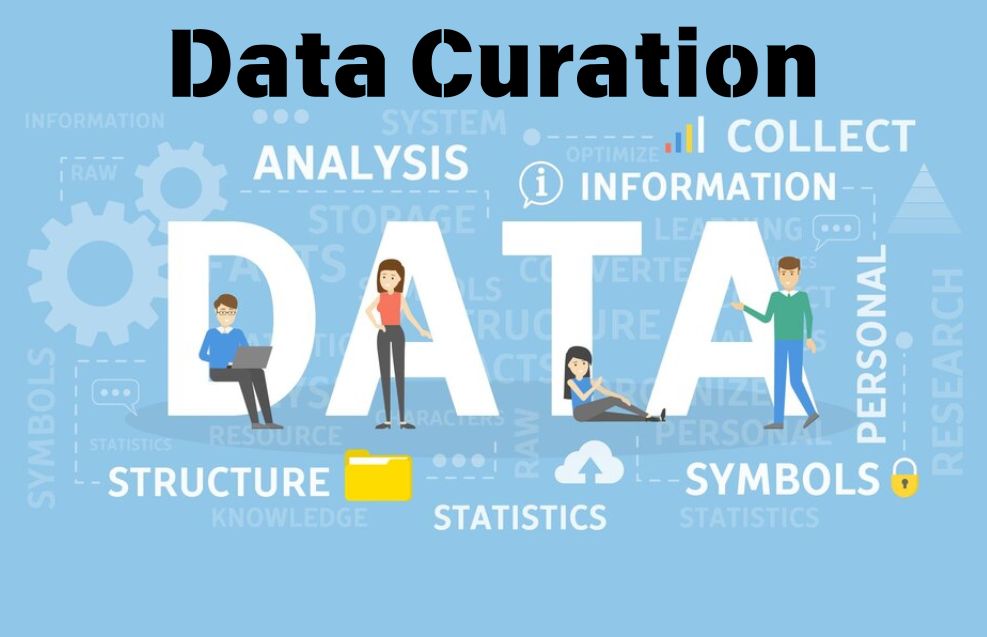Data curation is the backbone of effective information management, ensuring that raw data is transformed into a valuable, accessible, and usable resource. As organizations continue to generate massive volumes of data, the importance of data curation cannot be overstated. It plays a crucial role in enabling businesses, researchers, and individuals to harness the full potential of their data assets.
Understanding Data Curation
At its core, it involves the organization, maintenance, and enhancement of data to make it more accessible and usable. It is a multi-step process that includes:
- Collection: Gathering data from various sources, whether structured, semi-structured, or unstructured.
- Validation: Ensuring data accuracy, completeness, and reliability by identifying and rectifying errors.
- Organization: Structuring data in a logical format for easier access and analysis.
- Preservation: Safeguarding data to maintain its quality and usability over time.
- Sharing and Access: Making curated data available to relevant stakeholders while adhering to security and privacy standards.
This ensures that datasets are not only stored but also enriched and contextualized, allowing for informed decision-making and innovation.
The Importance of Data Curation in the Digital Age
The exponential growth of data has made this an essential practice for various reasons:
1. Enhancing Data Quality
Raw data often contains inconsistencies, duplicates, and inaccuracies. Through the curation, organizations can clean and standardize their datasets, ensuring that the information they rely on is accurate and reliable.
2. Streamlining Decision-Making
Curated data provides a solid foundation for analytics and reporting, enabling faster and more informed decisions. With accurate and well-organized data, businesses can identify trends, predict outcomes, and optimize their operations.
3. Supporting Compliance and Security
In an era of stringent data protection regulations, such as GDPR and CCPA, data curation helps organizations maintain compliance. Proper curation ensures that sensitive information is handled appropriately and that data is securely stored and accessed.
4. Facilitating Collaboration and Research
In academic and research settings, this enables seamless collaboration. Researchers can access well-organized datasets, saving time and fostering innovation.
Key Components of Effective Data Curation
To implement a successful data curation strategy, organizations must focus on the following components:
1. Metadata Management
Metadata provides context to data, describing its source, structure, and purpose. Effective metadata management ensures that datasets are easy to find, understand, and utilize.
2. Data Standardization
Standardizing data formats and structures simplifies integration and analysis. It ensures consistency across datasets from different sources.
3. Data Enrichment
Adding value to raw data by linking it with relevant external information or insights enhances its usability and relevance.
4. Automation Tools
Leveraging this curation tools and technologies, such as machine learning algorithms, can streamline repetitive tasks and improve efficiency.
Challenges in Data Curation
Despite its significance, this comes with its own set of challenges:
1. Volume and Variety of Data
Managing large volumes of diverse data types can be overwhelming. Organizations must invest in scalable solutions to handle this complexity.
2. Ensuring Data Privacy and Security
Balancing data accessibility with privacy and security requirements is a critical challenge in the curation process.
3. Resource Constraints
Effective curation requires skilled personnel, time, and technology investments. Many organizations struggle to allocate adequate resources.
The Role of Technology in Data Curation
Advancements in technology have revolutionized the curation, making it more efficient and accessible. Key technological solutions include:
1. Artificial Intelligence (AI) and Machine Learning (ML)
AI and ML can automate data cleaning, enrichment, and categorization processes, reducing manual effort and minimizing errors.
2. Data Integration Platforms
These platforms enable seamless integration of data from various sources, simplifying the curation process.
3. Cloud Computing
Cloud-based storage and curation solutions offer scalability, flexibility, and cost-effectiveness, making it easier to manage large datasets.
4. Blockchain Technology
Blockchain ensures data integrity and security by creating tamper-proof records, which is particularly valuable for sensitive datasets.
Industries Benefiting from Data Curation
This curation is not limited to a specific sector. Its applications span across various industries, including:
1. Healthcare
In healthcare, curated data supports patient care, research, and operational efficiency. For example, organizing electronic health records (EHRs) ensures that medical professionals have access to accurate patient information.
2. Finance
Financial institutions rely on this to detect fraud, manage risks, and optimize investment strategies. Curated data enhances the accuracy of financial models and forecasts.
3. Retail
Retailers use this curation to analyze consumer behavior, personalize marketing campaigns, and optimize inventory management.
4. Education and Research
Curated datasets facilitate academic research and improve educational content delivery, enhancing learning outcomes.
Best Practices for Data Curation
To ensure effective curation, organizations should adopt the following best practices:
1. Develop a Data Governance Framework
Establishing clear policies and procedures for data management ensures consistency and accountability.
2. Invest in Training
Providing training for staff on this curation techniques and tools enhances the overall effectiveness of the process.
3. Adopt a Collaborative Approach
Encouraging collaboration between departments and stakeholders fosters a unified curation strategy.
4. Monitor and Update Regularly
This curation is not a one-time activity. Regular updates and monitoring ensure that datasets remain relevant and accurate.
Future Trends in Data Curation
The field of data curation is evolving rapidly, driven by technological advancements and changing organizational needs. Some emerging trends include:
1. Automated Data Curation
Automation will play a more prominent role, reducing manual intervention and improving efficiency.
2. Real-Time Data Curation
As the demand for real-time insights grows, curation processes will increasingly focus on enabling instant access to updated data.
3. Focus on Ethical Data Curation
Ethical considerations, such as avoiding bias and ensuring fairness, will become integral to this curation strategies.
4. Integration of Edge Computing
Edge computing will enable the curation closer to the source, reducing latency and enhancing efficiency.
Conclusion
Data curation is an indispensable practice in today’s data-driven world. By transforming raw data into a valuable asset, it empowers organizations to make informed decisions, drive innovation, and achieve their objectives. As technology continues to advance, the scope and significance of this curation will only grow, making it a critical skill for businesses and individuals alike. Embracing this curation not only enhances operational efficiency but also ensures that data serves as a strategic advantage in the competitive landscape.

